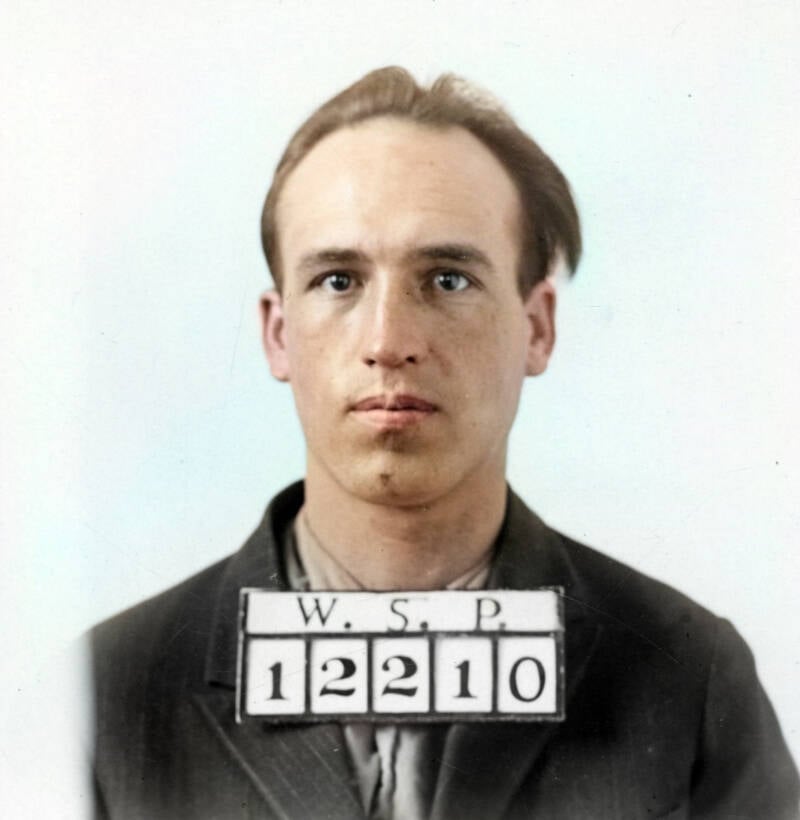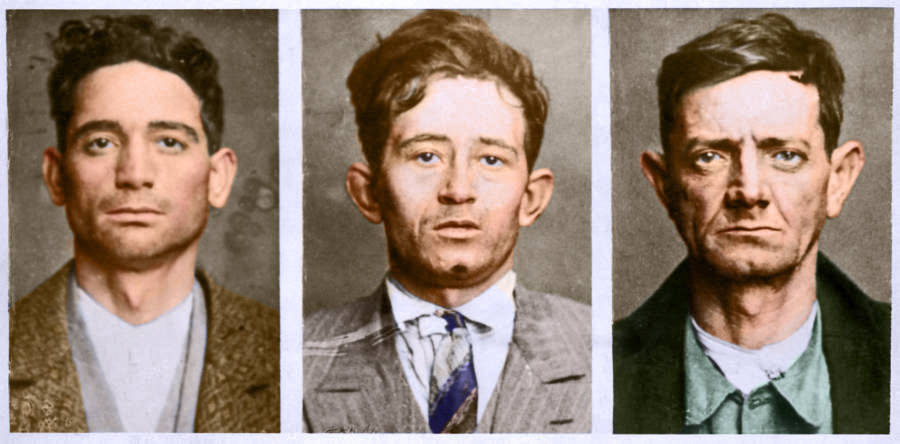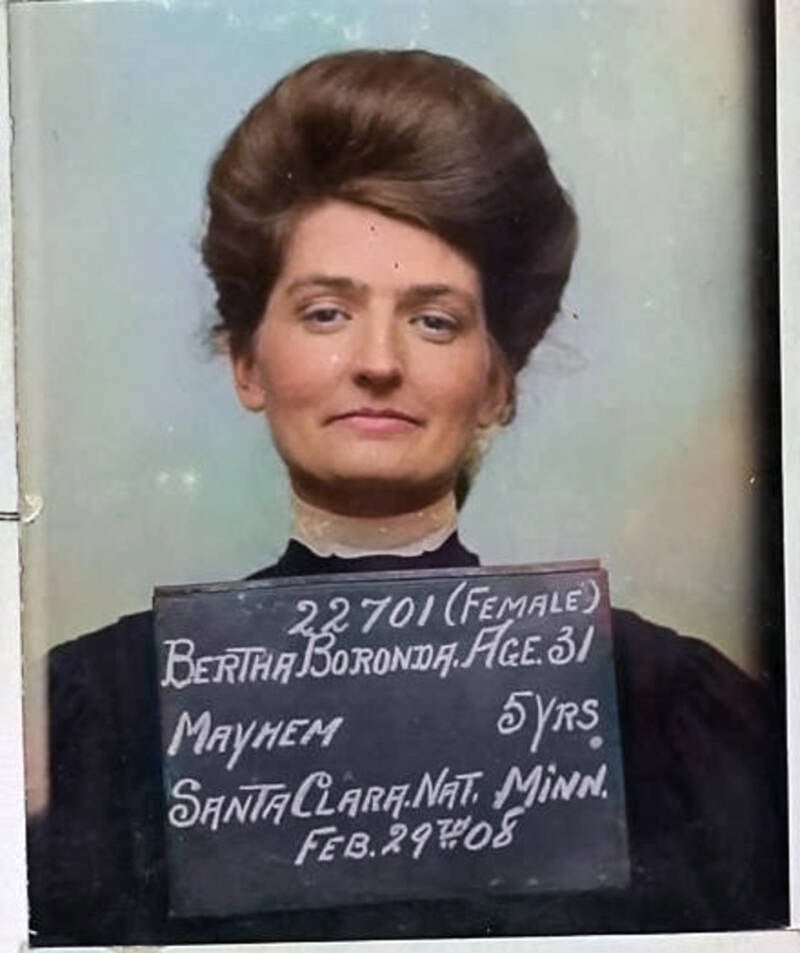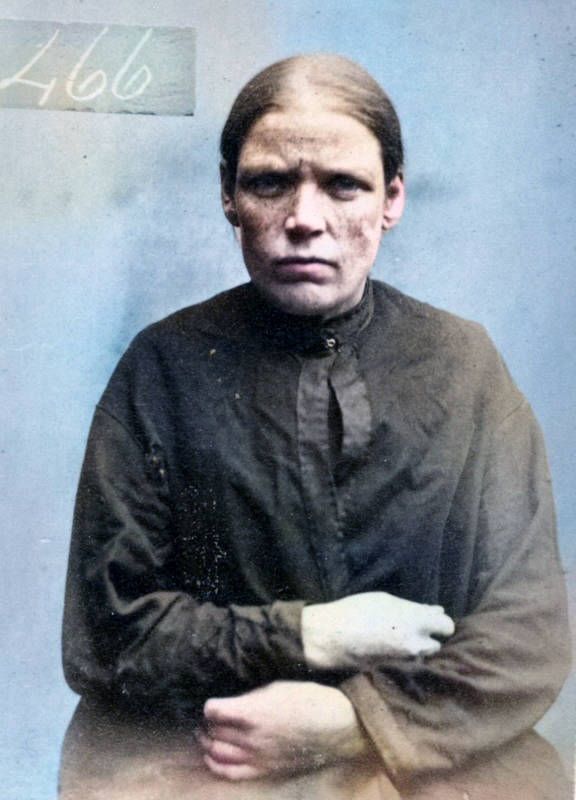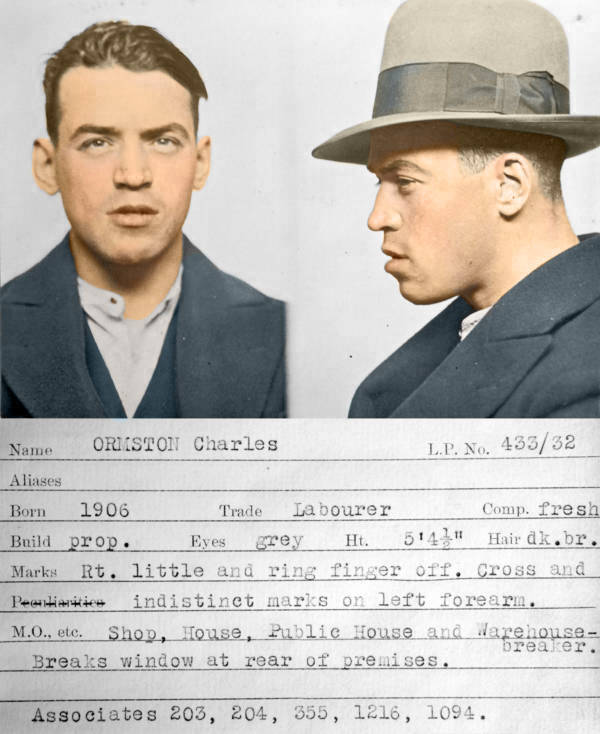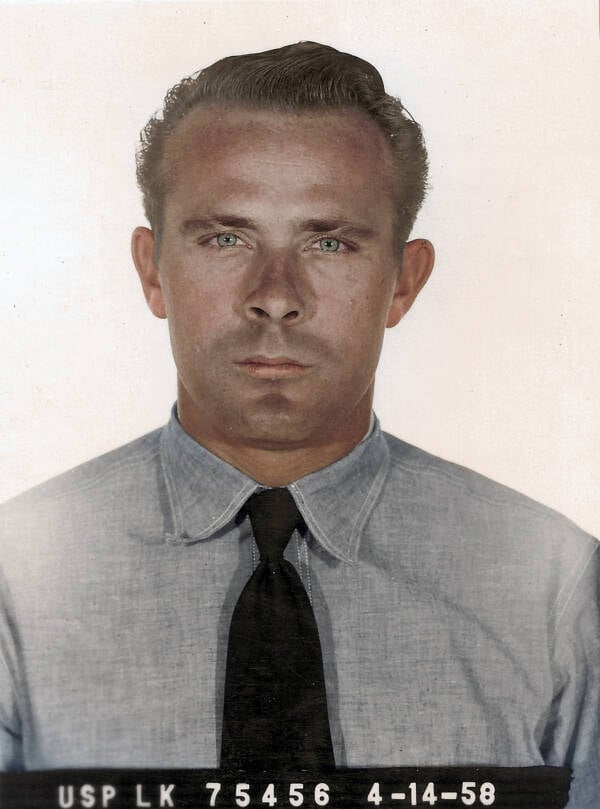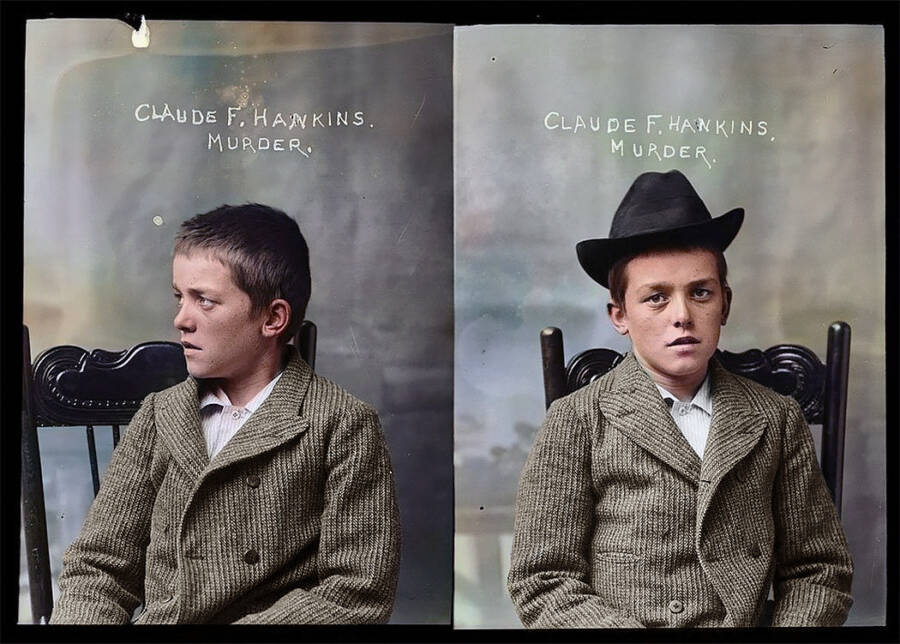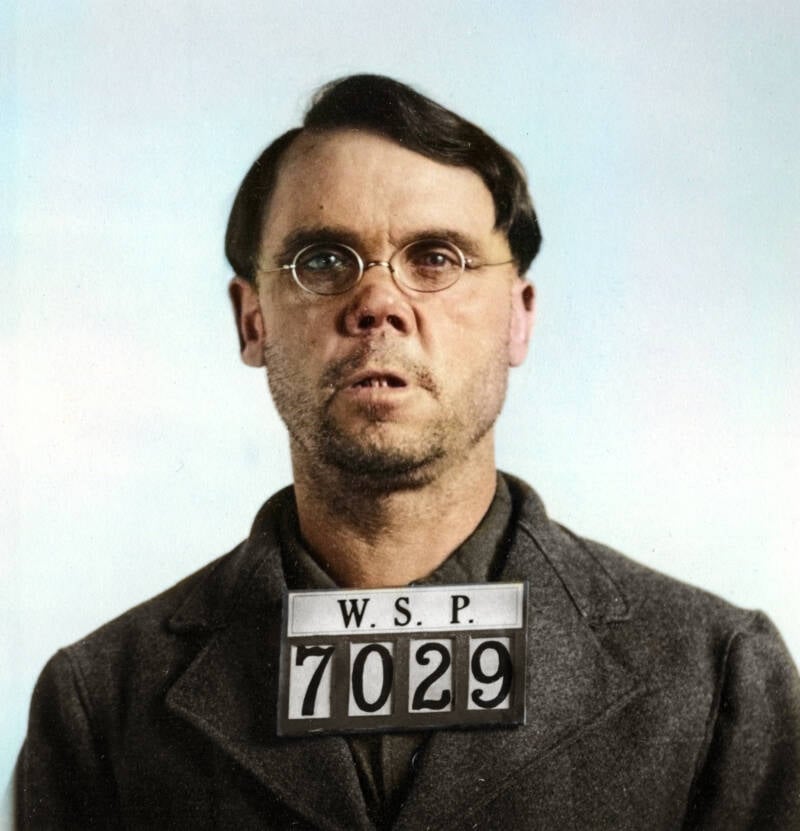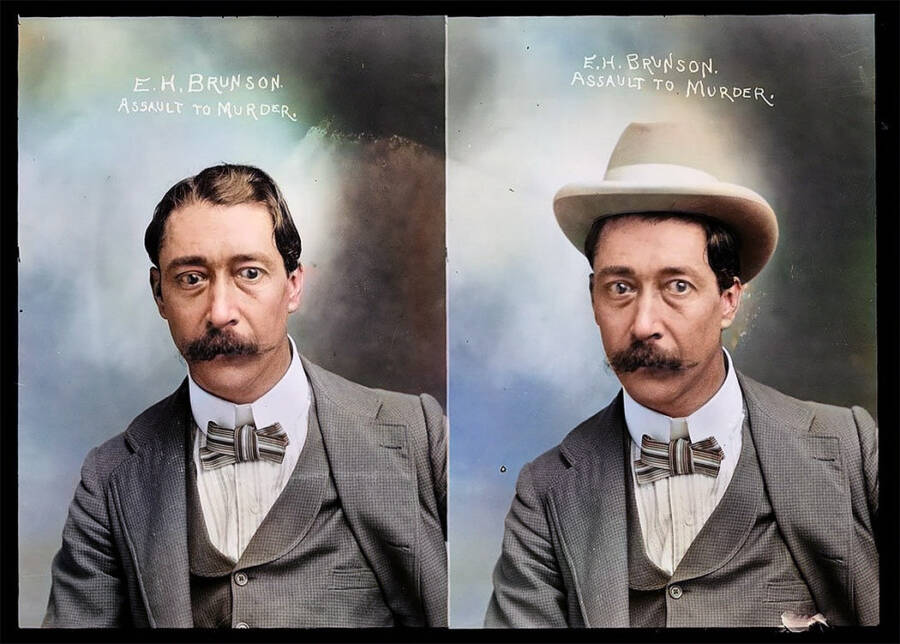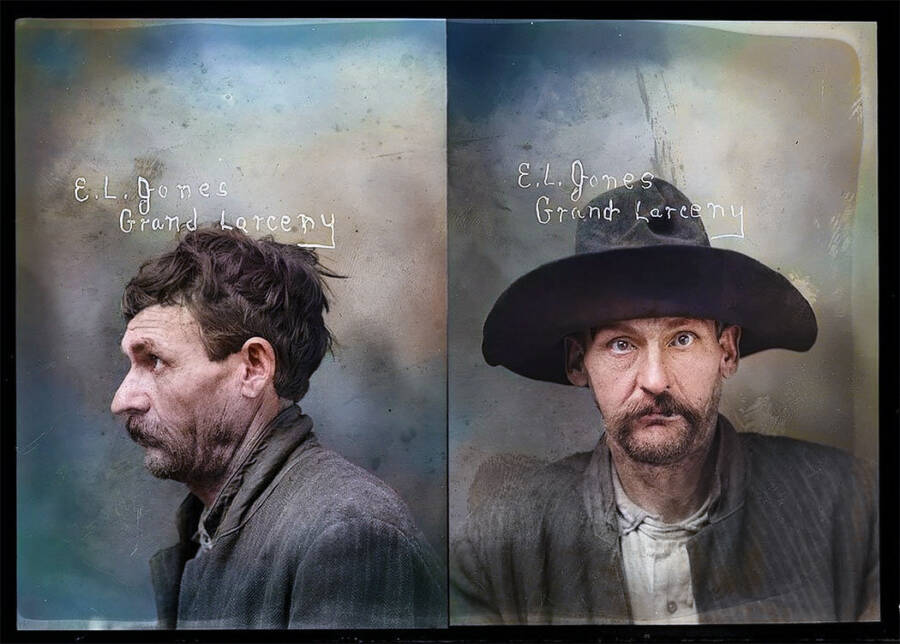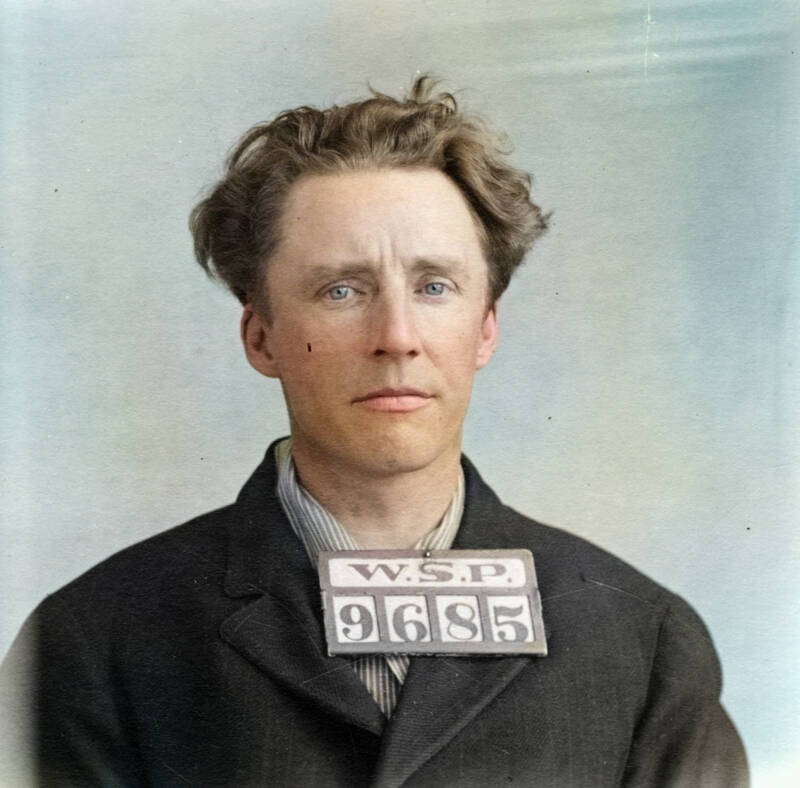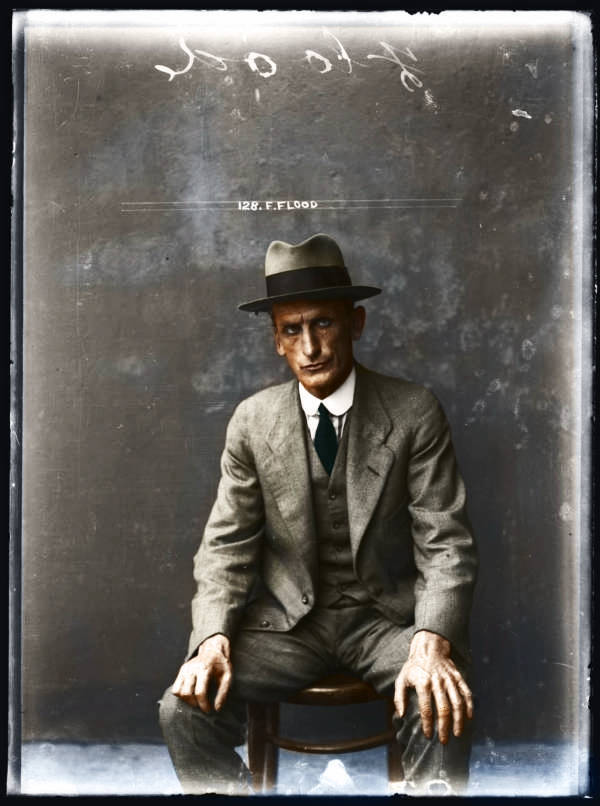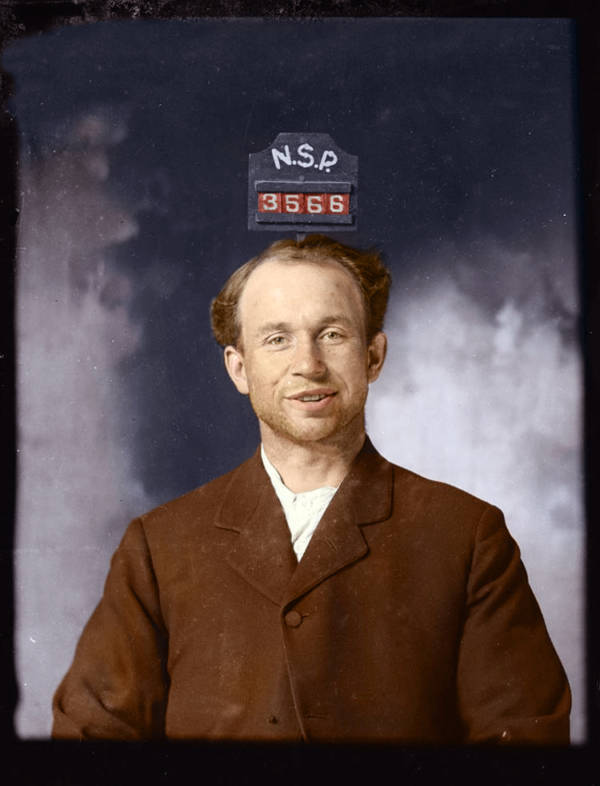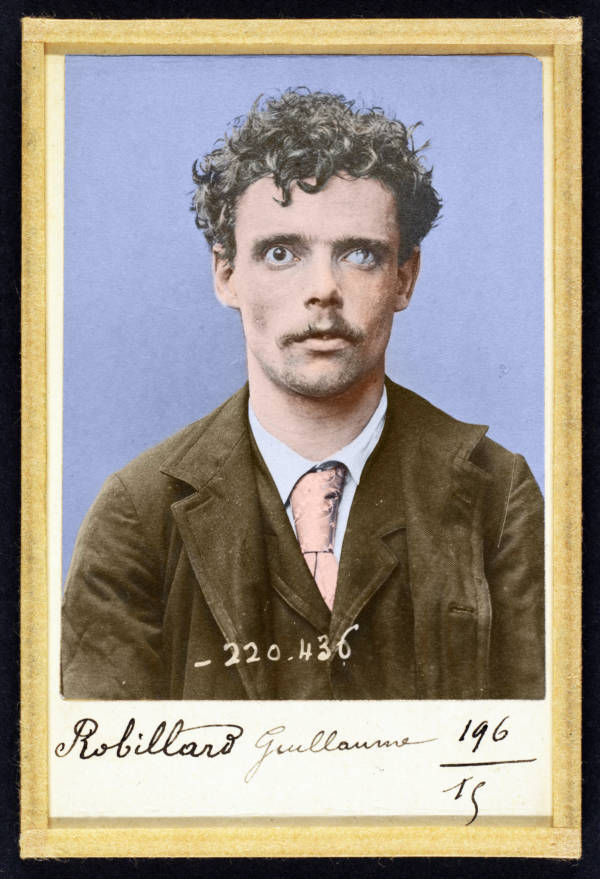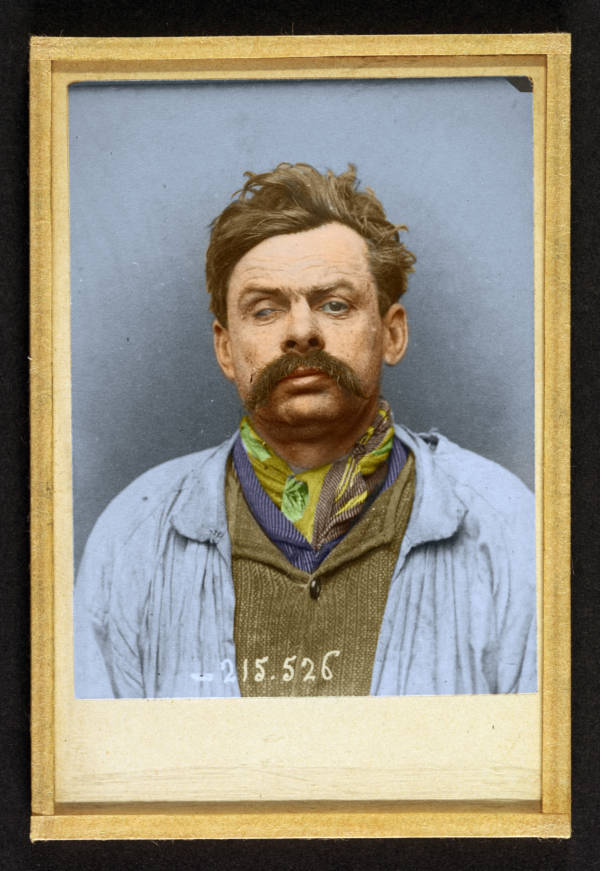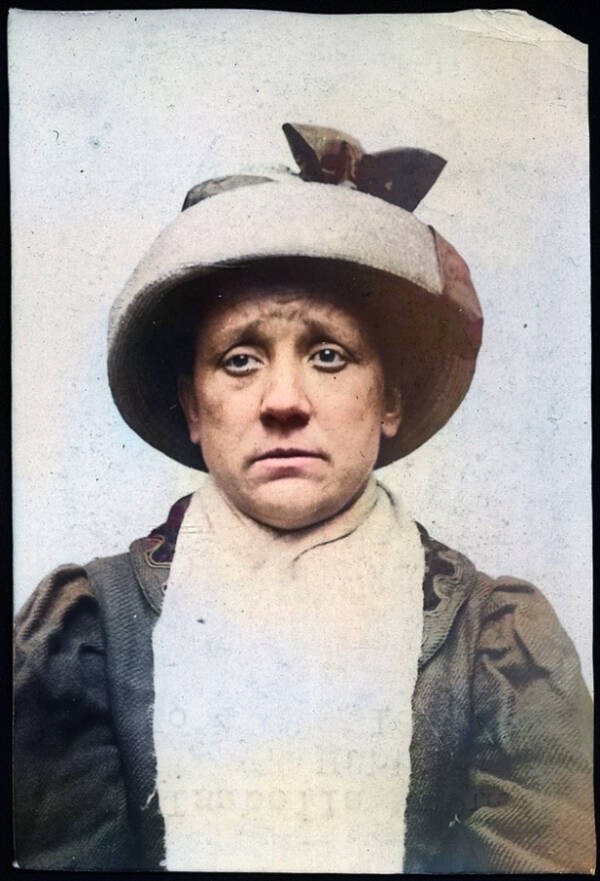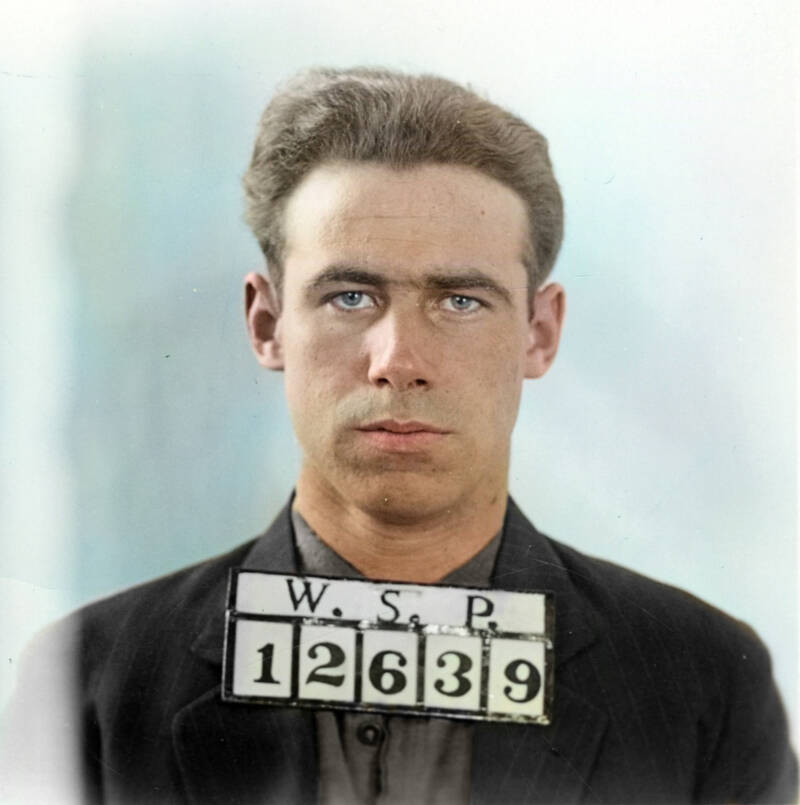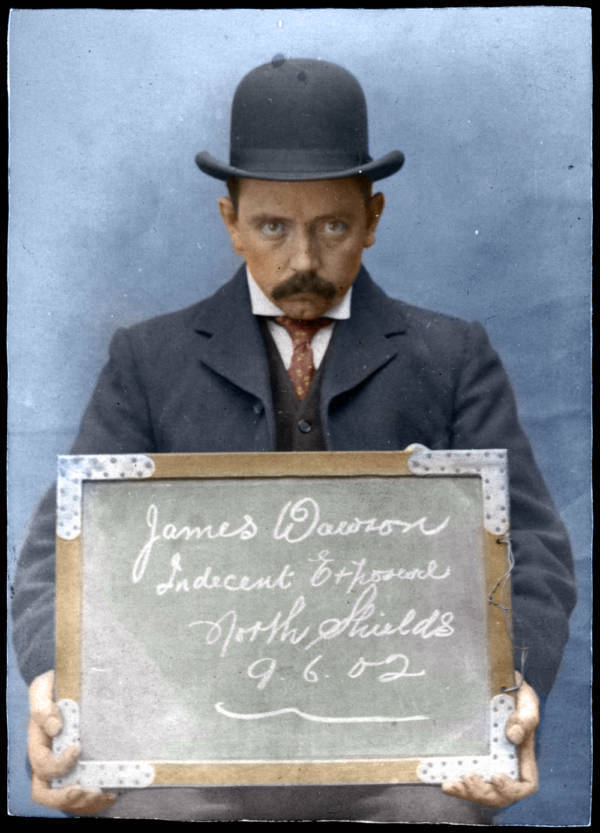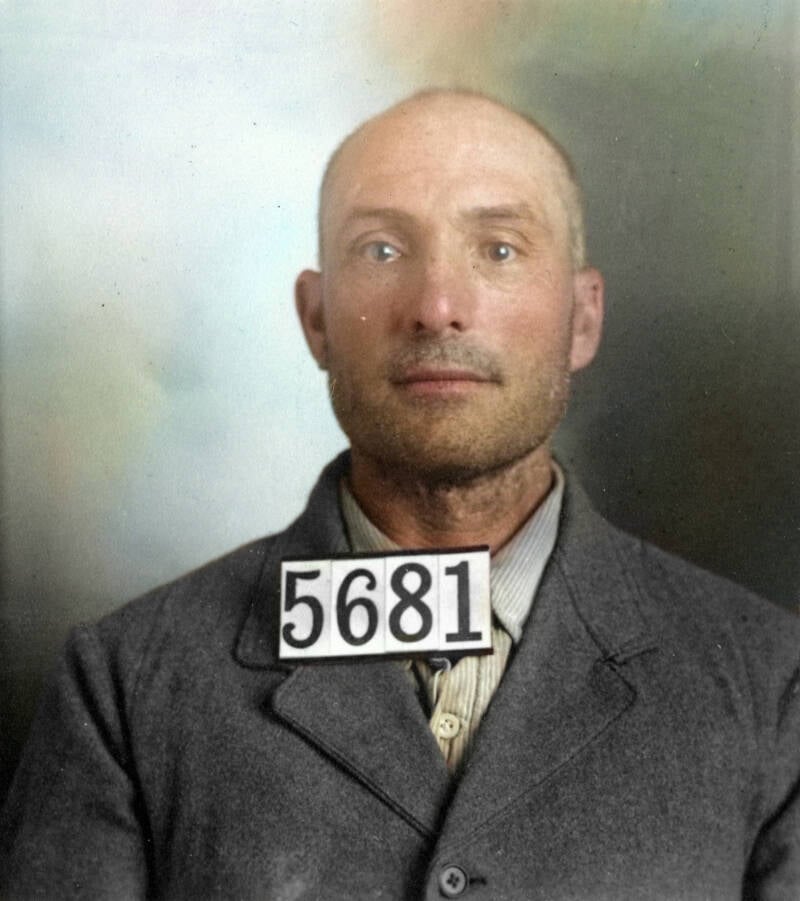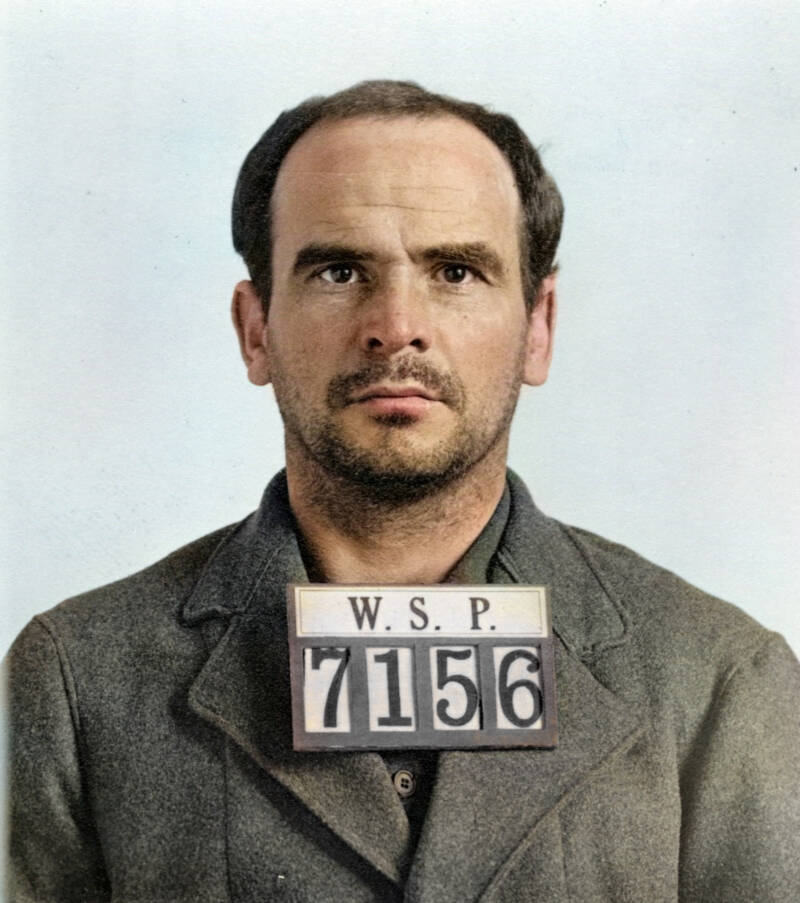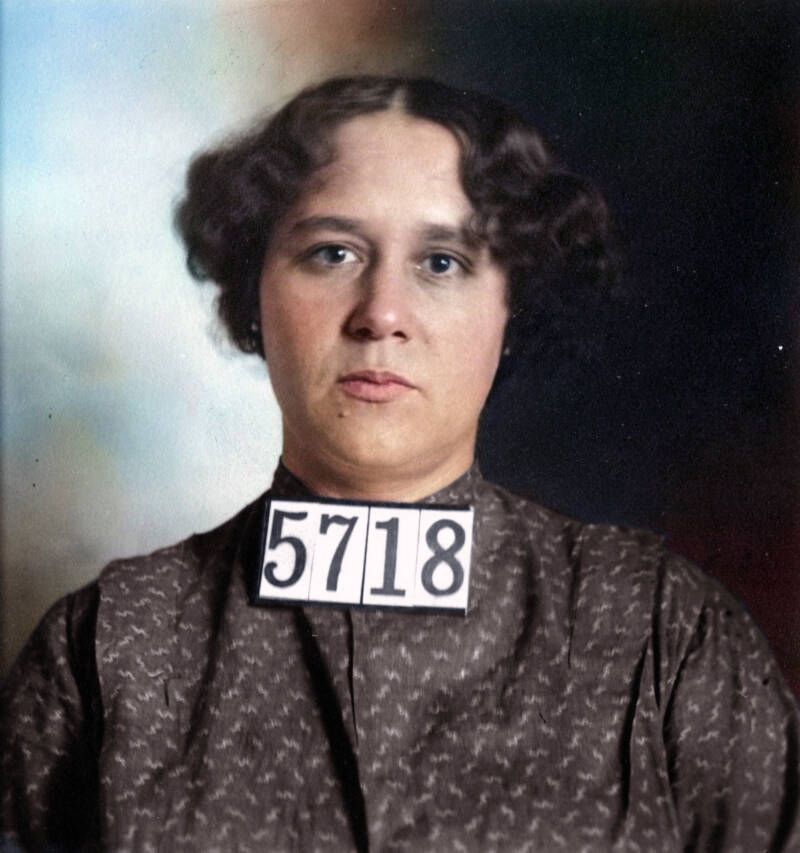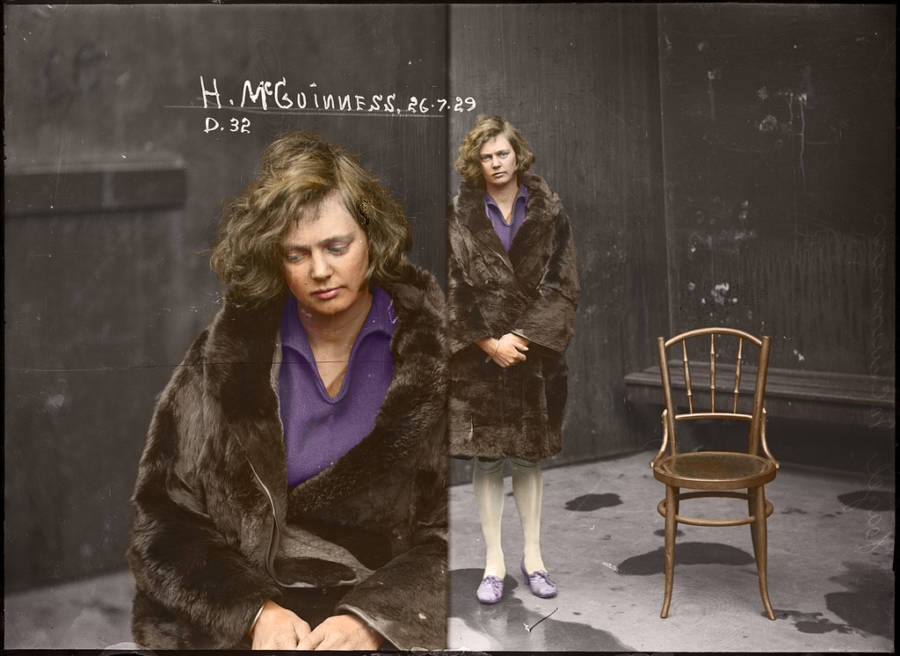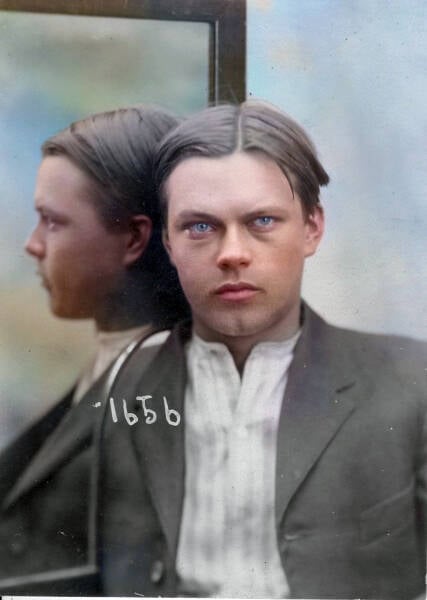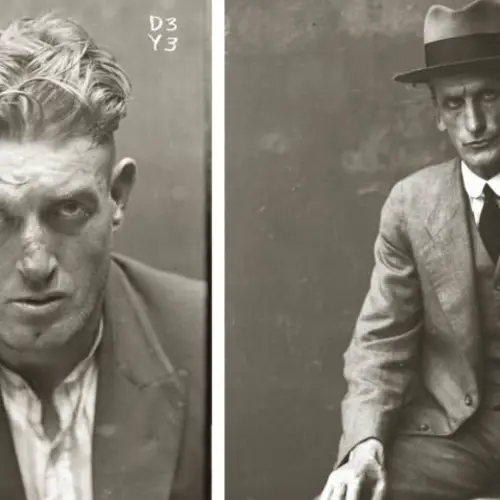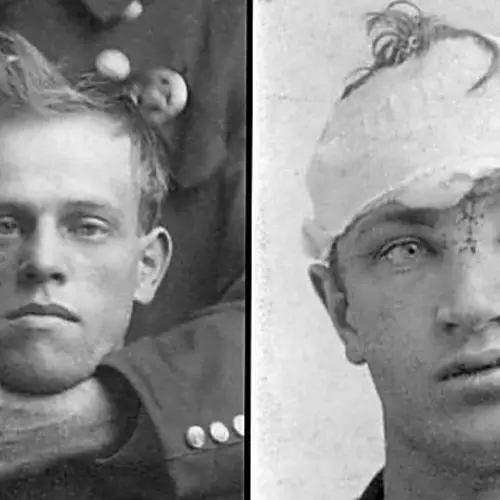From one of the only men to ever escape from Alcatraz to a serial killer who gleefully confessed to murdering 21 people, these vintage mugshots are just as unsettling as they are compelling.
Mugshots have been a powerful police tool — and a source of public fascination — for more than a century. In fact, they trace their origins back to 19th-century Paris.
Louis Daguerre invented the first publicly available photographic process in 1839. Almost immediately, police officers found photography useful when it came to tracking down criminals. Evidence of this early practice goes back as far as the 1840s in Belgium.
However, it was another Frenchman — Alphonse Bertillon — who invented the mugshot some 50 years later and created a system that would eventually be adopted by police departments all around the world.
The Bertillon Method
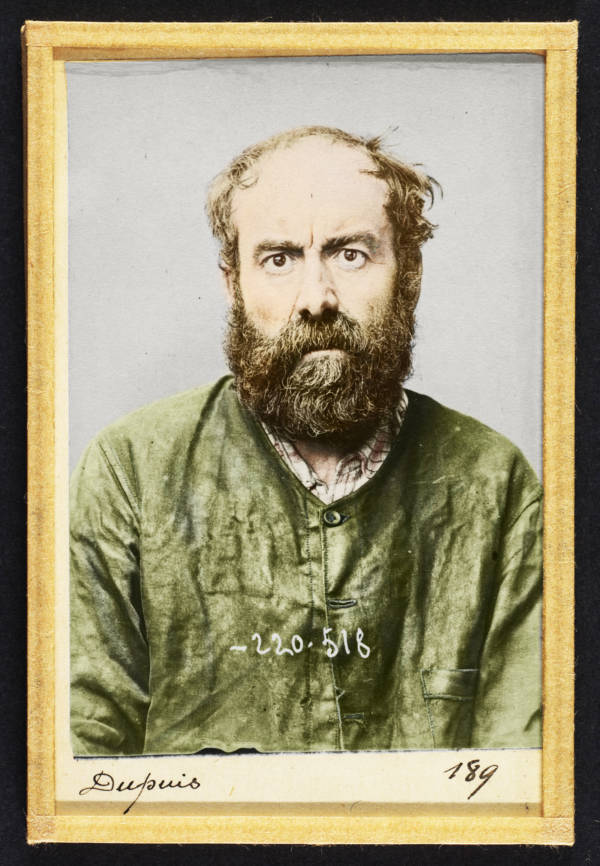
Alphonse Bertillon/The Metropolitan Museum of ArtAugustin Dupuis, an anarchist photographed by Alphonse Bertillon. 1894.
Bertillon was an unlikely trailblazer. While both his father and brother were expert statisticians, Bertillon himself was very much a black sheep.
Expelled from the Imperial Lycée of Versailles, Bertillon spent four years in the French army before securing a low-level position in the Parisian police. In 1879, as a police clerk, he grew frustrated with the department's ad hoc methods of identifying and documenting criminals and suspects.
Paris was in the middle of a crime surge, and in Bertillon's view, the police's skills weren't up to snuff. So he developed what came to be known as the Bertillon System of documenting and organizing criminals and suspects.
According to the system, the police would measure a suspect's head length, head breadth, the length of the middle finger, the length of the left foot, and the length of the "cubit," or the forearm from the elbow to the tip of the middle finger.
The idea was that each person's combination of measurements would be more or less unique. It served as a sort of "fingerprint" in an era before actual fingerprinting was a common police practice.
The mugshot — one photo of the subject facing the camera and one taken in profile — was perhaps the most important element of the system.
Before long, the system showed success — so it was implemented all across France. In 1883, Bertillon identified 49 repeat offenders. And by 1884, that number increased to 241. Unsurprisingly, the Bertillon System in France earned him major praise. By 1888, he became the chief of France's newly-established Department of Judicial Identity.
He also published a book describing his process for posterity called Signaletic Instructions Including the Theory and Practice of Anthropometrical Identification. (They sure knew how to write catchy titles back in the 1890s.)
Mugshots Then And Now
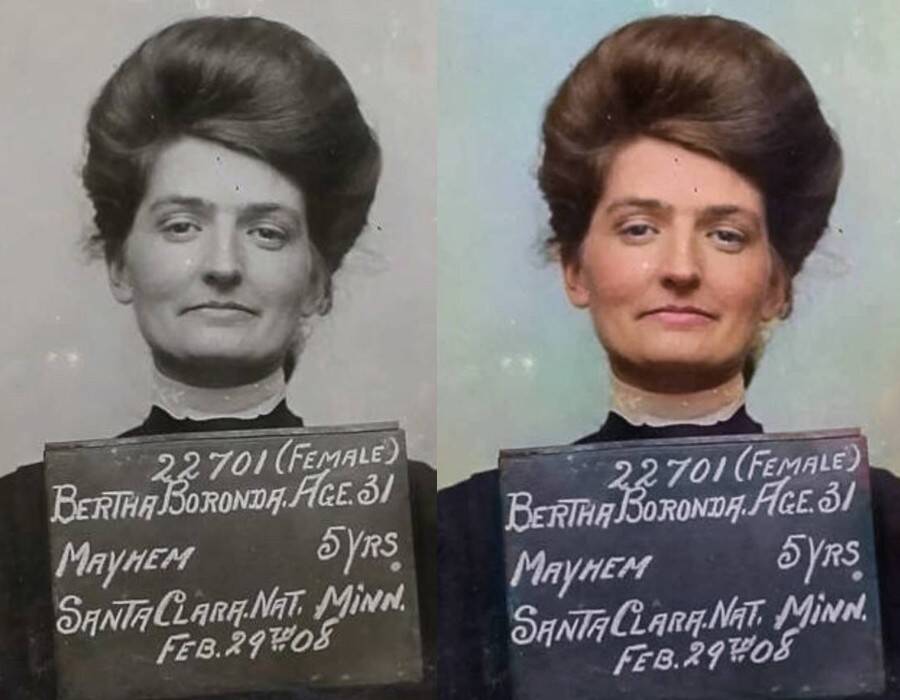
San Jose Police DepartmentA mugshot of Bertha Boronda, a woman charged with "mayhem." 1908.
The Bertillon System made its debut on the world stage when it was demonstrated at the Chicago World's Fair in 1893. David R. Papke, a professor at Marquette University Law School, explains the response as such:
"It was an age of science, and some thought of the mug shot as a useful component in 'scientific law enforcement.' Indeed, there are surviving efforts by police departments to superimpose photographs of certain types of criminals on top of one another. We could then, theoretically, have distilled images of, to note only two of many possibilities, the typical pickpocket or typical forger."
The Bertillon System was far from perfect — and some of Bertillon's investigations did fail. And it didn't take long for most of the system to be overtaken by the modern-day practice of fingerprinting. However, the mugshot still prevails today.
The mugshot was already a standard procedure for police departments worldwide by the 20th century. But it wasn't until the 1970s and 1980s that they started regularly being printed in color.
After checking out these colorized vintage mugshots, take a look at colorized mugshots of some of the most famous people in history. Then, see some more vintage mugshots in their original monochromatic form.
